NIL
Mandel: House settlement clearinghouse won’t create CFB’s goal for more level playing field

With the House vs. NCAA settlement approved, college athletics is about to begin the latest chapter in its long history of attempting to interfere with the market for athletes’ services.
Let’s see if this version holds up better in court than all the ones before it.
As you know by now, the House settlement has given birth to a new system by which schools for the first time can directly pay their athletes up to $20.5 million this coming school year. The schools will insist these are purely NIL deals and do not constitute “pay-for-play,” but of course, they are entirely contingent on the athlete playing for that university. And that’s fine. Nothing wrong with paying someone for their services.
But where the settlement veers into outright market manipulation is the establishment of a new NIL Go clearinghouse, operated by Deloitte, by which athletes must submit all deals they receive from outside sources that exceed $600. Which, in the major sports, is pretty much all of them. If Deloitte deems, say, a running back’s $1 million deal from a school’s collective to be above “fair market value,” he cannot accept it.
In every other industry in this country, “fair market value” is whatever someone is willing to pay you. Just ask the many mediocre football coaches who make $6-8 million a year. Or the athletic directors who make $1.2 million a year to hire those mediocre coaches. No clearinghouse for those folks.
Every legal expert I’ve spoken with about this subject thinks there’s little chance this clearinghouse would survive a legal challenge. It sure sounds like yet another instance of competitors (in this case, the Power conferences) conspiring to limit athletes’ compensation. Go back and read the Supreme Court decision in Alston v. NCAA to see how the highest court in the land feels about restrictions on athletes’ compensation.
It’s somewhat poetic the House settlement got approved during Game 3 of the WCWS, where $1M pitcher NiJaree Canady nearly led Texas Tech to an improbable national title.
Because the purpose of the new Deloitte NIL clearinghouse is to stamp out collectives like Texas Tech’s.
— Stewart Mandel (@slmandel) June 7, 2025
Nevertheless, the Power conferences — it’s them, not the NCAA driving this — are pressing ahead. On Monday, they proudly unveiled their newly created enforcement entity, the College Sports Commission, led by former Major League Baseball executive Bryan Seeley, who is likely being paid seven figures to make sure college athletes stop getting paid seven figures. Presumably, they’ve consulted with their lawyers, who have told them the thing is ironclad. The next Judge Wilken will be totally fine with it.
By now, you may be asking yourself, “Why are they doing this? Who exactly is being harmed by a transfer quarterback getting $3 million from a school’s collective?” Athletes going into the portal at any moment is an understandable source of frustration, but the House settlement does nothing to address that issue. It just wants to curb how much one gets for going into the portal.
The stated reason, as Nick Saban, for one, has said 1,000 times, is the need for a “level playing field.” It’s not “fair” that Texas Tech has an oil billionaire willing to spend $10 million-plus on the transfer portal if Alabama doesn’t have one. How many times have we heard: This is not what NIL is intended for.
It doesn’t particularly matter at this point what NIL was intended for. This is what it’s become. Collectives became a thing specifically because schools didn’t want anything to do with paying athletes. Now that they’re forced to, they want to unwind time and reverse things.
But what’s really rich is the whole “level playing field” thing.
There has never, ever been a level playing field in college recruiting. The schools with the most money have always held an advantage over everyone else. They have the most history, the biggest stadiums, the best-paid coaches and the most lavish facilities. Ohio State was dominating Purdue in recruiting long before there were ever NIL collectives, and the Buckeyes will keep dominating in the revenue-sharing era. You could set the cap at $60.5 million, not $20.5 million, and there’s still no scenario where the Boilermakers would be able to outspend the Buckeyes.
Meanwhile, people have been so busy the past few years shouting that the sky is falling that they’ve failed to notice that NIL may be the first development in history that’s actually given a larger pool of teams a chance at landing top talent.
The top quarterback in the portal this offseason, Tulane’s Darian Mensah, did not go to Georgia or Ohio State. He chose Duke, where he’s getting a reported $4 million NIL deal. The nation’s No. 1 men’s basketball recruit, A.J. Dybantsa, is not going to North Carolina or Kansas; he’s going to BYU, for a reported $5 million deal. And last year, softball phenom NiJaree Canady turned down that sport’s biggest juggernaut, Oklahoma, in favor of Texas Tech, which gave her that sport’s first-ever seven-figure deal. Earlier this month, she and her team ended the Sooners’ reign — and she signed another deal.
All of those deals got done before the House settlement was approved. Had they not, theoretically, Deloitte could flag them for being too far above “market value.”
Clearly, booster-driven collectives aren’t going away. If Oracle founder Larry Ellison wants to give the next Michigan quarterback recruit $4 million, it seems highly unlikely someone could tell him no. Either the collectives will get more creative in how they structure their deals, or someone is going to sue and succeed in getting an injunction.
Neither the schools nor the athletes would be the ones filing that suit because they’re bound by the settlement. But boosters aren’t bound by it. Companies aren’t bound by it. And, most concerning to the conferences, state attorneys general aren’t bound by it. They’re the folks who succeeded in getting both the NCAA’s booster restrictions and transfer restrictions shot down.
We know this much: Most schools that plan to offer the maximum $20.5 million in House payments are following a formula by which they’ll allocate around $13 million for football and $3 million for men’s basketball. Ohio State last year spent $20 million on football alone, and many schools are spending way more than that this year. Kentucky is one of several programs planning to spend more than $10 million on men’s basketball.
Coaches’ and administrators’ salaries have only gone up and up and up over time, but the powers that be seem to think they can make athletes’ unofficial salaries go down with their magic clearinghouse.
That’s not generally how markets work.
(Photo: Carmen Mandato / Getty Images)
NIL
Fernando Mendoza NIL deals, explained: How much money Indiana star makes from adidas, other sponsors
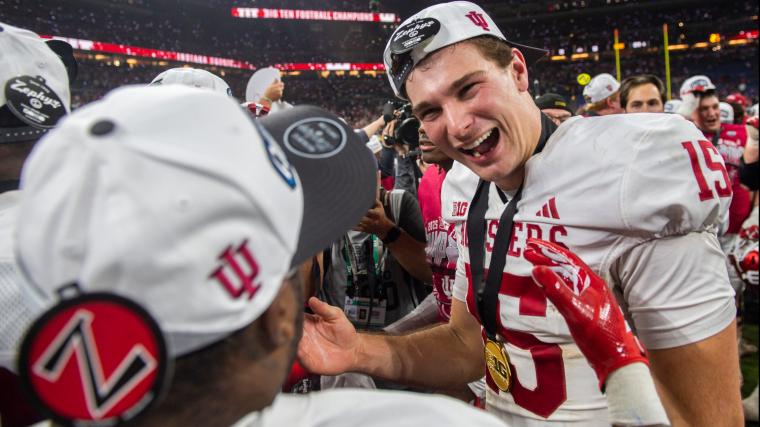
Fernando Mendoza NIL deals, explained: How much money Indiana star makes from adidas, other sponsors originally appeared on The Sporting News. Add The Sporting News as a Preferred Source by clicking here.
Fernando Mendoza has had a magical 2025 season, leading the Indiana Hoosiers to an undefeated 13-0 regular season and the program’s first outright Big Ten title since 1945. Along with breaking program records as a team, Mendoza has produced a historic season of his own.
Advertisement
The redshirt junior quarterback, a transfer from California, shattered Indiana’s single-season passing marks by completing 71.5% of his passes for 2,980 yards and a nation-leading 33 touchdown passes against just six interceptions. He also proved to be a threat with his legs, adding 240 rushing yards and six rushing touchdowns, putting him second nationally in total touchdowns accounted for (39). His remarkable campaign earned him Big Ten Offensive Player of the Year and Quarterback of the Year honors, along with the Walter Camp Player of the Year award. He also became just the second player in program history to be named a finalist for the Heisman Trophy.
As one of the top players in the nation, Mendoza’s rapid rise has made him a face of the collegiate game’s new financial era. His personal brand — which includes a recent high-profile endorsement deal with Adidas and his exclusive “Mendoza Mania” merchandise line — has soared throughout the season.
Here’s a breakdown of how much the Indiana star has brought in.
MORE: Indiana 2025 College Football Playoff tickets guide
Advertisement
Fernando Mendoza NIL money
According to the latest industry valuations, the Indiana star’s Name, Image, and Likeness (N.I.L.) portfolio is valued at an estimated $2.6 million, positioning him among the top five highest-valued college football players in the country.
On3 has the quarterback ranked fifth in college football and seventh in its N.I.L 100. He is listed below only four FBS players:
-
Arch Manning, Texas ($5.3 million)
-
Jeremiah Smith, Ohio State ($4.2 million)
-
Carson Beck, Miami ($3.1 million)
-
Bryce Underwood, Michigan ($3 million)
His valuation spiked from an estimated $1.6 million earlier in the year to $2.6 million after the Hoosiers’ perfect regular season.
MORE: Who will Indiana play next?
Fernando Mendoza NIL deals
Mendoza has two main NIL partnerships.
Advertisement
Adidas
Ahead of Indiana’s 13-10 Big Ten Championship win over No. 2 Ohio State, Mendoza inked a deal with Adidas.
“Excited to share that I’ve accepted an opportunity to join adidas!” said on LinkedIn. “I’m very grateful for everyone who has supported me along the way and excited to bring my passion for sport, leadership, and work ethic to the Three Stripes. Let’s get to work.”
He joins a star-studded adidas lineup that includes Ohio State’s Jeremiah Smith, Nebraska’s Dylan Raiola and Arizona State’s Sam Leavitt and Jordyn Tyson.
MORE: How Curt Cignetti turned Indiana into a college football powerhouse
Advertisement
Mendoza Mania
In collaboration with his brother Alberto, who is Indiana’s backup signal-caller, Mendoza launched a brand-new “Mendoza Mania” Collection on the Indiana NIL Store.
The initiative carries a deeply personal meaning for Mendoza: a portion of all proceeds from the collection will benefit the National MS Society, honoring his mother who continues her courageous fight against Multiple Sclerosis.
This compassionate focus transforms the quarterback’s commercial venture into a vehicle for impact, lending deeper purpose to every piece of “Mendoza Mania” merchandise sold.
By leveraging his national spotlight, Mendoza is driving crucial funds and awareness for the National MS Society’s mission to cure the disease and empower those affected to live their best lives.
Advertisement
MORE: Curt Cignetti’s best quotes at Indiana
Fernando Mendoza net worth 2025
Mendoza’s net worth is not publicly available. Though, sources report that his net worth is in the hundred thousands, reaching up to $1 million.
This will continue to rise as Mendoza leads Indiana through the College Football Playoff, and down the road, becomes a first round pick in the NFL Draft.
MORE: Fernando Mendoza, Curt Cignetti react to Indiana’s rise
NIL
Rece Davis names former Pac-12 coach who should be top candidate for Michigan head coaching job
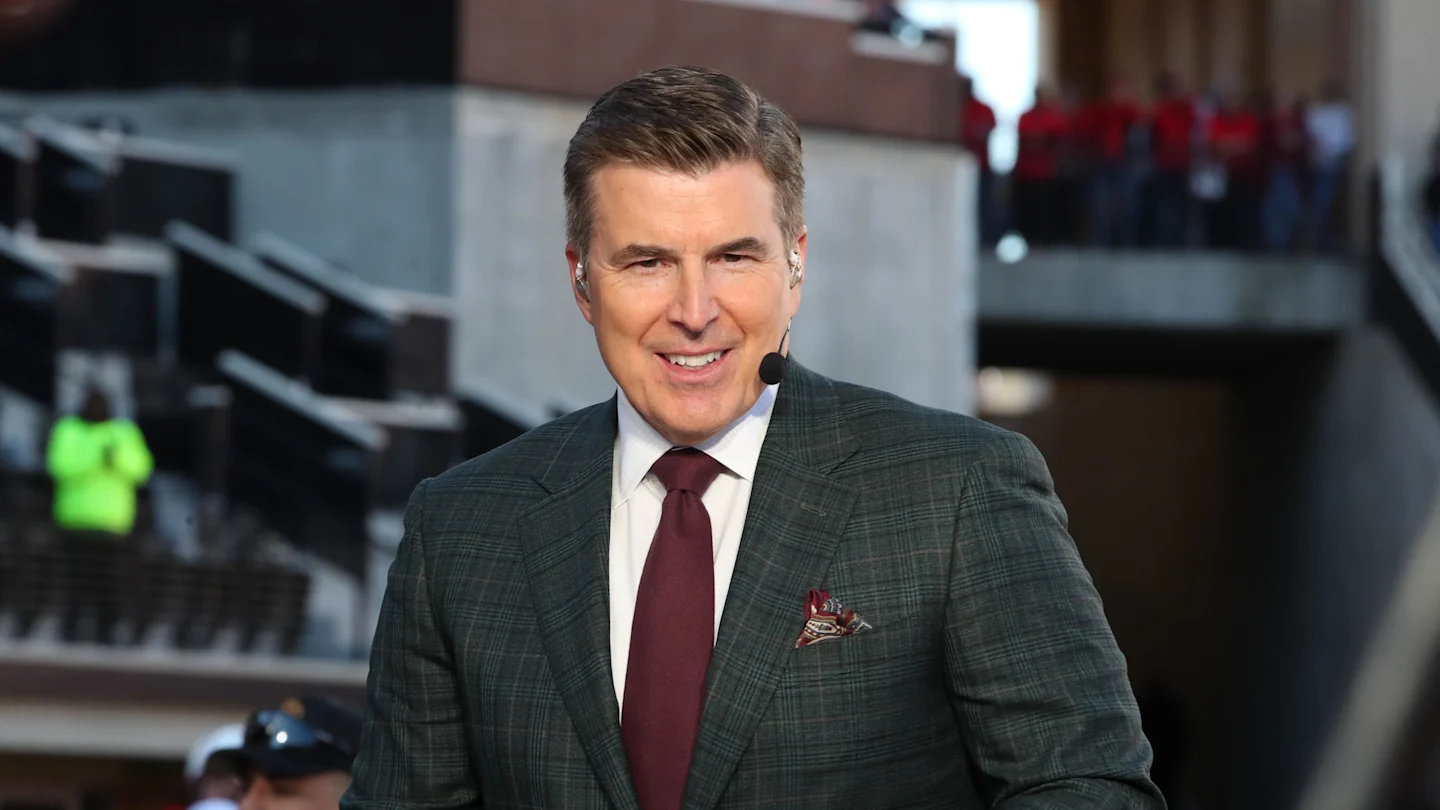
Almost every list of potential head coach candidates for Michigan has had some combination of the same names, like Kalen DeBoer, John Harbaugh, Jesse Minter, Kenny Dillingham, etc.
But ESPN’s Rece Davis had an interesting suggestion that hasn’t been mentioned much at all since the stunning development that led to Michigan firing head coach Sherrone Moore on Wednesday for having an inappropriate relationship with a staff member, and Moore was arrested and charged with stalking and home invasion.
Davis, the host of “College GameDay” and a prominent voice on college football matters, suggested that former Stanford coach David Shaw should not only be on Michigan’s list of candidates but “given the circumstances, likely atop the list,” he posted on social media.
If I were in Warde Manuel and Michigan’s position, I’d have David Shaw very high on my list. Given the circumstances, likely atop the list.
— Rece Davis (@ReceDavis) December 12, 2025
Shaw is in his first season as the Detroit Lions’ passing game coordinator and has not coached in college football since he resigned as Stanford’s head coach at the end of the 2022 season.
Shaw was 96-54 in 12 seasons at Stanford, including five seasons with double-digit wins. His 2015 Cardinal team went 12-2, won the Rose Bowl and finished No. 3 in the final AP top 25 poll. His 2011 and 2012 teams both finished No. 7 in the AP rankings, going 11-2 and 12-2, respectively.
Shaw’s Stanford tenure had two very distinct chapters, though. Through his first eight seasons, he was 82-26, winning at least eight games in every season, collecting three Pac-12 championships, four Pac-12 Coach of the Year awards and the Bobby Dodd national coach of the year award in 2017. Over his final four years, he went 14-28 with three losing seasons.
Shaw’s style would fit seamlessly at Michigan, as his best Stanford teams were known for dominant, physical rushing attacks.

Davis’ suggestion that Shaw should be atop Michigan’s list was beyond just his coaching resume, though.
The Wolverines program is in turmoil with one black eye after another now, from the NCAA investigation into and substantial penalties from the Connor Stalions sign-stealing scandal and now the ugly ending to Moore’s two-year tenure as head coach.
Shaw has his own connections to former Michigan coach Jim Harbaugh, serving as Harbaugh’s offensive coordinator at Stanford before succeeding him as head coach there, but he has a pristine reputation and record free of scandal and was among the most respected coaches in college football during his time with the Cardinal.
It’s not a crazy idea, though Michigan fans will surely prefer a splashier hire and a coach who has excelled in this new NIL/transfer portal era of college football.
NIL
Cignetti, Mendoza, Smith, Ponds earn awards, recognition during ESPN’s college football awards show – The Daily Hoosier
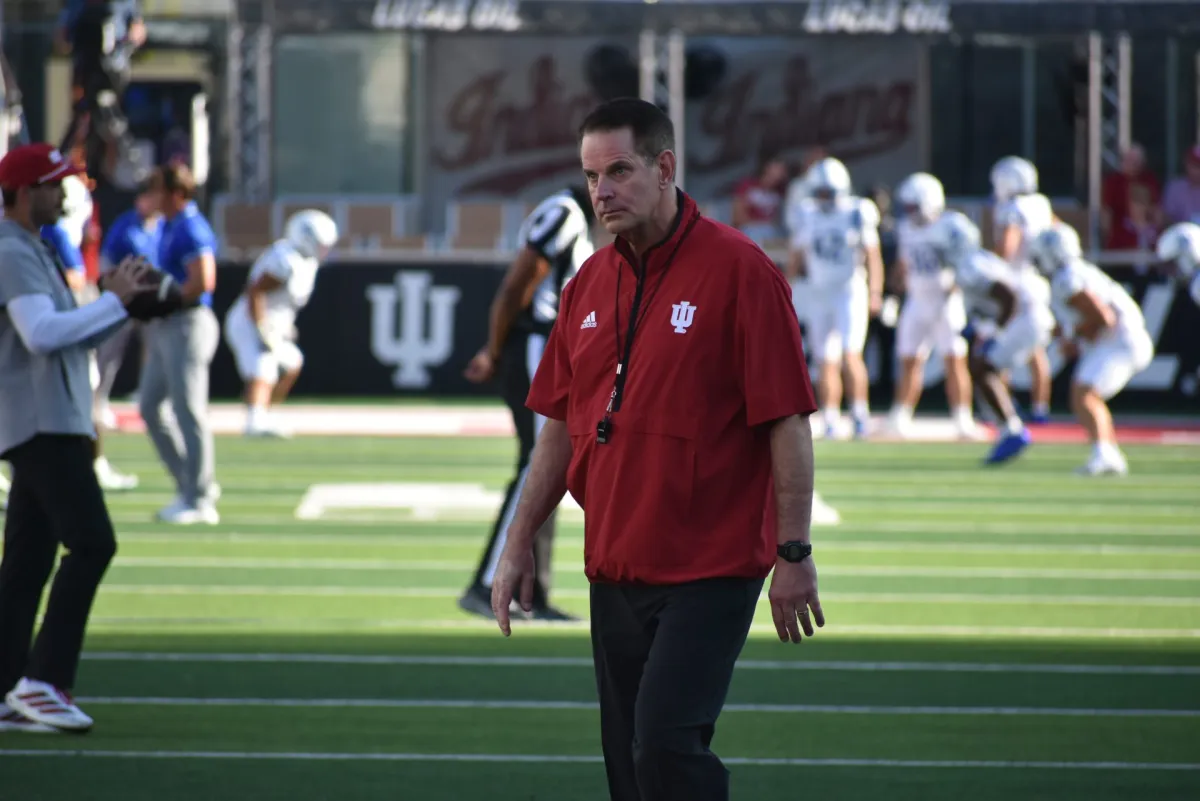
Indiana head football coach Curt Cignetti and quarterback Fernando Mendoza each earned accolades during ESPN’s 35th annual The Home Depot College Football Awards, while a trio of Hoosiers were selected for All-America honors during the telecast.
Cignetti earns his second national coach of the year award this season in the form of the Home Depot Coach of the Year honor. He previously won the Walter Camp National Coach of the Year award. He earned each award in back-to-back seasons. He the first coach to win the Home Depot Coach of the Year award in back-to-back seasons.
Mendoza was named winner of the Davey O’Brien Award and Maxwell Award to go along with his Walter Camp Award earlier in the week. He then joined teammates Carter Smith (OL, First Team) and D’Angelo Ponds (DB, Second Team) on the Walter Camp Football Foundation All-America Team.
Cignetti helped the Hoosiers to its first unblemished regular season in program history, a program-record 13 wins through its first Big Ten Championship Game victory and the No. 1 seed in the upcoming College Football Playoff. On Wednesday, he became the first coach to win consecutive Walter Camp National Coach of the Year honors in the awards 59-year history.
Mendoza is the second Hoosier to win the prestigious Maxwell Award, joining running back Anthony Thompson in 1989. He is the first Big Ten student-athlete to win the award since Penn State running back Larry Johnson in 2002 and the first Big Ten quarterback to win the award since Drew Brees in 2000.
Mendoza currently leads the nation in passing touchdowns (33) and is the Power 4 leader in touchdowns responsible for (39). He is the third Big Ten quarterback since 2000 with three-straight games of at least four passing touchdowns and zero interceptions – C.J. Stroud (Ohio State; 2021) and Kyle Orton (Purdue; 2004, four straight). The Miami, Florida, native is the only FBS quarterback since at least 1996 with multiple games of at least 90 percent completion and four touchdown passes versus Power 4 opponents.
In 2025, Mendoza is the lone FBS quarterback with five games of 4-plus touchdown passes and zero interceptions and entered Championship Week as the FBS leader in percentage of passes that result in a touchdown at 10.9%, over one point higher than the next closest passer (Sayin, Ohio State; 9.2%).
He has thrown a touchdown pass in 12-straight games entering the College Football Playoff and has five games with both a passing and rushing touchdown in 2025. He has thrown 33 touchdowns to just six interceptions, is tied for No. 2 on the team with six rushing touchdowns and has 240 yards rushing on the season.
The Hoosiers earned the No. 1 spot in the College Football Playoff and will play the winner of Alabama/Oklahoma in the Rose Bowl Game on Jan. 1, 2026. The game from Rose Bowl Stadium will kick at 4 p.m. ET
Related
NIL
Trump ‘willing to put the federal government behind’ changes to NIL

On the cusp of the 45th anniversary of their defeat of the Soviet Union in the 1980 Lake Placid Winter Olympics, the United States’ “Miracle on Ice” Olympic men’s hockey team was honored at the White House on Friday, Dec. 12 with Congressional Gold Medals.
It led into a brief discussion on the current state of Name, Image and Likeness (NIL) in college sports when Team USA captain Mike Eruzione was asked about the topic by a reporter. Following a brief response from Eruzione, President Donald Trump joined the conversation and made a statement.
Advertisement
“Something ought to be done, and I’m willing to put the federal government behind it,” Trump said of overhauling NIL in college sports during a bill signing ceremony in the Oval Office. “And if it’s not done fast, you’re going to wipe out colleges.”
REQUIRED READING: ‘Miracle on Ice’ team honored with Congressional Gold Medals by President Trump
This is not the first time that Trump has spoken on the state of college athletics in a time where NIL and the transfer portal have taken over. He made similar remarks on “The Pat McAfee Show” during a phone call interview on Veterans Day.
Republicans in the U.S. House of Representatives recently pulled the scheduled final vote for the Republican-backed SCORE Act that would have allowed the NCAA and its recently formed College Sports Commission to create and enforce national rules that have been under legal dispute in recent years.
Advertisement
The SCORE Act (Student Compensation And Opportunity Through Rights and Endorsements) had sought to provide more regulation and calm the chaotic environment created by the introduction of NIL compensation, revenue sharing and the transfer portal to college sports.
The USA TODAY app gets you to the heart of the news — fast. Download for award-winning coverage, crosswords, audio storytelling, the eNewspaper and more.
This article originally appeared on USA TODAY: Trump says ‘something ought to be done’ about NIL in college sports
NIL
Here’s what Trump has to say about NIL in college sports
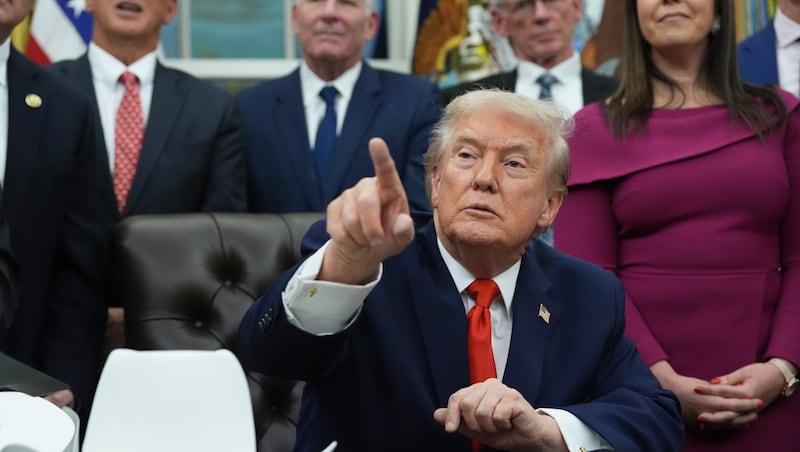
President Donald Trump isn’t a big fan of college athletes being paid for the use of their name, image and likeness.
In fact, he trashed NIL in response to a question about it Friday.
During a ceremony at the White House to honor the gold-medal winning 1980 U.S. Olympic hockey team, a reporter asked about NIL deals and the transfer portal, noting the “Miracle on Ice” players were amateurs who didn’t get paid.
Advertisement
Team captain Mike Eruzione said he didn’t like it, but that’s the state of college sports today and “we have no control over that.”
Trump, though, said maybe there is something to do about it.
“I think the NIL is a disaster for sports. It’s horrible for the Olympics, and I think it’s actually horrible for the players,” he said.
Trump said colleges are cutting “lesser” sports, those that don’t bring in revenue but help train athletes for the Olympics.
“Those sports don’t exist because they’re putting all their money into football, and by the way, they’re putting too much money into football,” Trump said.
As NIL and now revenue sharing has entered college sports, many schools across the country are having to make tough decisions about whether to maintain Olympic or nonrevenue sports.
Advertisement
The House v. NCAA settlement allows universities to pay their athletes up to $20.5 million per year, which works out to about 22% of the average athletic department revenue at Power Four schools. The vast majority of the money goes to football and men’s basketball players, the two most revenue-generating sports at most universities.
“You can’t pay a quarterback $14 million to come out of high school. They don’t even know if he’s going to be a very good player,” Trump said. “Colleges cannot afford to pay the kind of salaries you’re hearing out there.”
The highest reported NIL payments for football players have been in the $6 million to $8 million range. But Trump said schools won’t be able to stop paying more and more to get the player they believe will win them a national championship.
“You’re going to have these colleges wipe themselves out. And something ought to be done and I’m willing to put the federal government behind it. But if it’s not done fast, you’re going to wipe out colleges. They’re going to get wiped out, including ones that do well in football,” Trump said.
Advertisement
The president didn’t specify what he thinks the federal government should do. Several bills regulating NIL have been filed in Congress, but none have gained traction.
“Colleges cannot afford to play this game, and it’s a very bad thing that’s happening,” he said.

President Donald Trump answers media questions after a bill signing ceremony with members of the 1980 U.S. Men’s Olympic Hockey team, Friday, Dec. 12, 2025, in the Oval Office of the White House in Washington. | Jacquelyn Martin, Associated Press
Private equity enters college sports
Trump comments come as the University of Utah became the first school in the country to announce a deal with a private equity firm to infuse cash into its athletics program.
University administrators said the program has operated efficiently and generated a modest surplus over the years with the support of donors and student fees. But the decision to share revenues with athletes under the House settlement and the emergence of the transfer portal have added significant costs to the school.
Advertisement
The cost of supporting a nationally competitive athletics program has risen dramatically and far outpaces revenue growth, they said.
Utah intends to create a for-profit company called Utah Brands & Entertainment through its university foundation. It will partner with Otro Capital to run the commercial side of its sports program.
NIL
Bailey, Rodriguez garner Walter Camp All-America honors
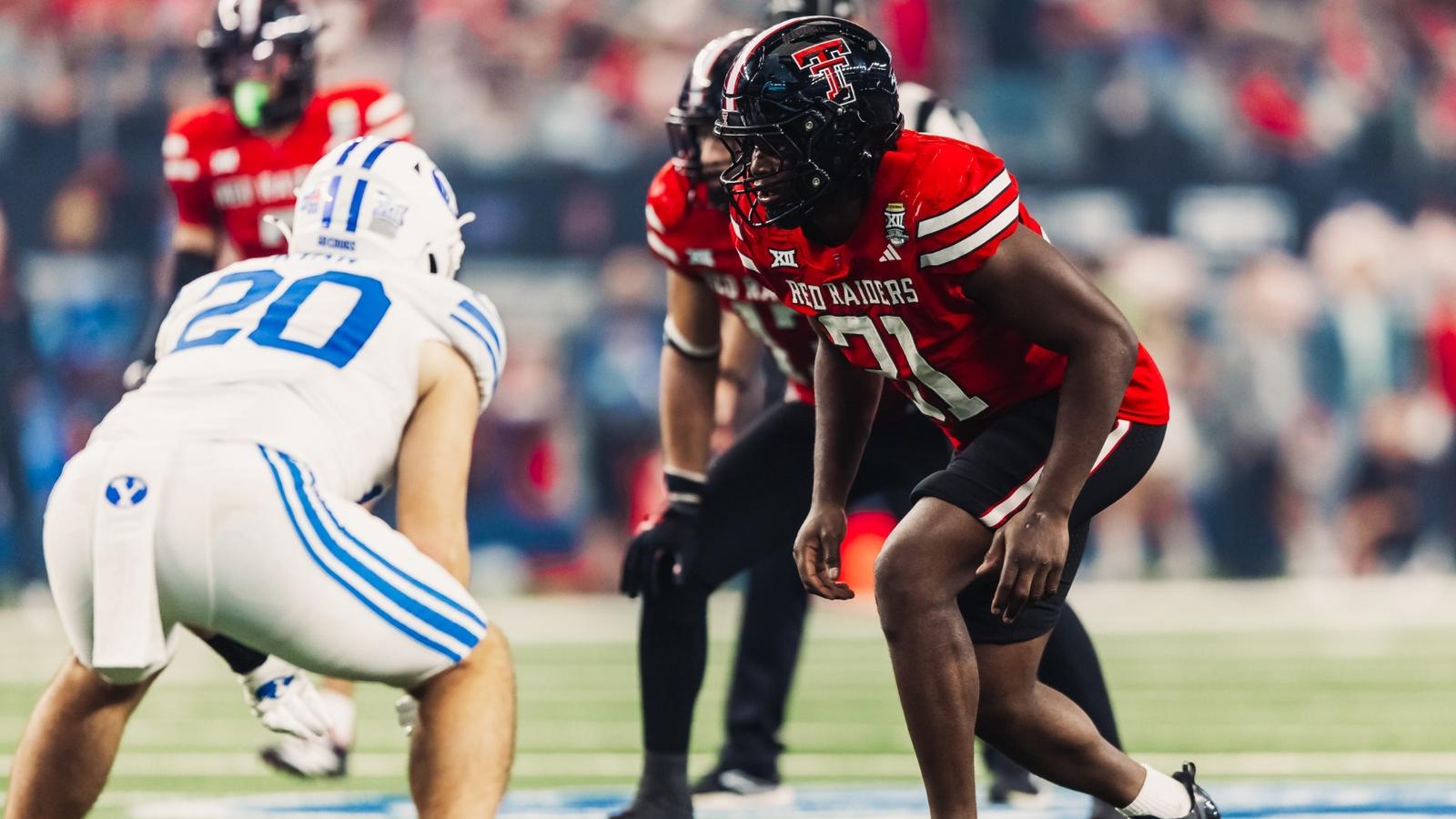
LUBBOCK, Texas – Texas Tech senior outside linebacker David Bailey and senior linebacker Jacob Rodriguez were both named first team All-Americans by the Walter Camp Foundation on Friday evening during the Home Depot College Football Awards Show on ESPN.
This is the first career All-America honor for both Bailey and Rodriguez, who became only the third set of Red Raider teammates to collect first team All-America honors in school history. Texas Tech had both linebacker Zach Thomas and defensive back Marcus Coleman represented on an NCAA-recognized All-America team in 1995, while the quartet of wide receiver Michael Crabtree, quarterback Graham Harrell and offensive linemen Rylan Reed and Brandon Carter were all recognized in 2008.
The Walter Camp All-America teams kick off the list of NCAA-recognized organizations that determine the NCAA’s annual consensus and unanimous All-America teams. The Associated Press All-America team will be unveiled Monday followed by the American Football Coaches Association (AFCA) on Tuesday, the Sporting News on Wednesday and the Football Writers Association of America (FWAA) on Thursday.
Now in its 136th year as the nation’s oldest All-America team, the Walter Camp Foundation had not previously recognized a Red Raider since tight end Jace Amaro was a unanimous selection to the first team in 2013. Rodriguez joins Thomas (1994-95) and Thomas Howard (1976) as the only linebackers in program history to receive first team All-America honors. Bailey, meanwhile, became the third Red Raider defensive end or outside linebacker to be recognized on the first team, joining two other greats in Montae Reagor (1998) and Tyree Wilson (2022).
The All-America honor only adds to a memorable week for Rodriguez, who was also named the winner of the Bednark Award Friday evening during the ESPN broadcast. Rodriguez has collected the Butkus Award (nation’s top linebacker), the Bronko Nagurski Trophy (nation’s top defensive player), the Lombardi Award (nation’s top lineman or linebacker) and the Pony Express Award (nation’s top duo with Bailey) in the past week alone.
Rodriguez has been the most-disruptive player in college football this season as he enters the College Football Playoff Quarterfinal at the Capital One Orange Bowl as the FBS leader with seven forced fumbles and ranks among the top-15 players nationally with 117 tackles. He is the first FBS player since 2005 to record at least five forced fumbles, two fumble recoveries and four interceptions all in the same season.
His impact has bolstered a Texas Tech defense that leads the nation with 31 takeaways and ranks third nationally in scoring defense at 10.9 points per game. Rodriguez was responsible for nine takeaways himself — all in Big 12 play – thanks to his ability to punch the ball out and also read the quarterback in coverage. Rodriguez is currently the highest-rated player in all of college football, according to Pro Football Focus, grading out at 93.3 overall so far this season.
Bailey, meanwhile, leads possibly the best defensive line in college football this season with 13.5 sacks, which leads all power conference players and ranks second overall nationally entering bowl season. Bailey, who is also third in the FBS with 17.5 tackles for loss, is in the midst of his most-productive collegiate season after arriving from Stanford this offseason with 14.5 sacks for his career at the time, one more than his total this season under head coach Joey McGuire and outside linebackers coach C.J. Ah You. He is 1.5 sacks shy of the Texas Tech single-season sacks record of 15.0 that was set by Brandon Sharpe in 2009.
Pro Football Focus has credited Bailey with 74 pressures this season, easily the most in college football as Adam Trick of Miami (Ohio) ranks second with 66. Louisville’s Clev Lubin is the next-closest power conference player to Bailey with 61 pressures of his own. Bailey’s ability to get to the quarterback has also caused three forced fumbles, a pass breakup and a fumble recovery.
As a team, Texas Tech is the only team in the country to rank in the top five nationally for not only scoring defense and total defense but also total offense and total offense. The result has pushed Texas Tech to its first Big 12 Conference title and a 12-1 record, marking the most wins in a season in school history.
The Red Raiders await the winner of the College Football Playoff opening round game between No. 5 Oregon and No. 12 seed James Madision in the Capital One Orange Bowl. Kickoff on New Year’s Day is set for 11 a.m. CT with coverage provided on ESPN and the Texas Tech Sports Network.
-

 Rec Sports3 weeks ago
Rec Sports3 weeks agoFirst Tee Winter Registration is open
-

 Rec Sports2 weeks ago
Rec Sports2 weeks agoFargo girl, 13, dies after collapsing during school basketball game – Grand Forks Herald
-

 Motorsports3 weeks ago
Motorsports3 weeks agoCPG Brands Like Allegra Are Betting on F1 for the First Time
-

 Motorsports3 weeks ago
Motorsports3 weeks agoF1 Las Vegas: Verstappen win, Norris and Piastri DQ tighten 2025 title fight
-

 Sports3 weeks ago
Sports3 weeks agoTwo Pro Volleyball Leagues Serve Up Plans for Minnesota Teams
-

 Sports3 weeks ago
Sports3 weeks agoSycamores unveil 2026 track and field schedule
-

 Sports3 weeks ago
Sports3 weeks agoUtah State Announces 2025-26 Indoor Track & Field Schedule
-

 Motorsports2 weeks ago
Motorsports2 weeks agoJo Shimoda Undergoes Back Surgery
-

 Motorsports2 weeks ago
Motorsports2 weeks agoRedemption Means First Pro Stock World Championship for Dallas Glenn
-

 Rec Sports2 weeks ago
Rec Sports2 weeks agoRobert “Bobby” Lewis Hardin, 56


























